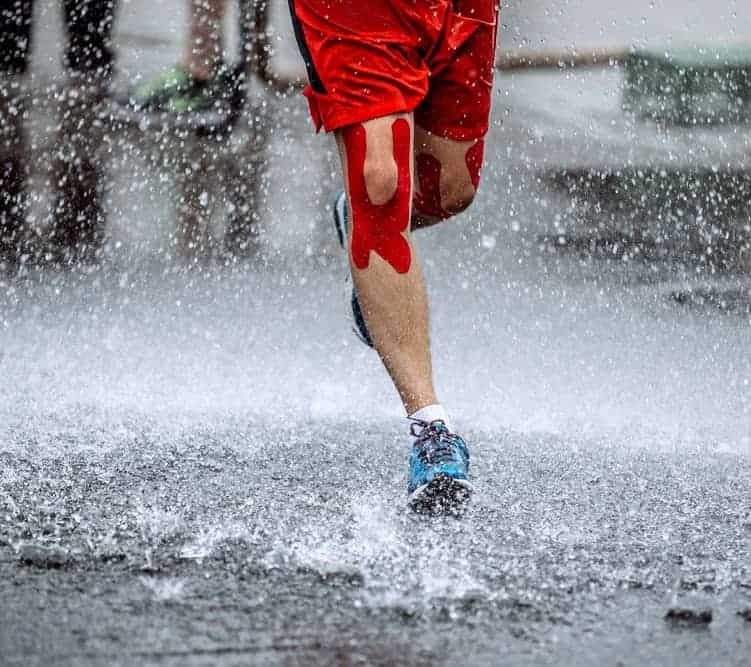Blog
5 Myths About Kinesiology Tape
You’ve probably heard conflicting arguments and might be wondering what the truth is about kinesiology tape. The use of kinesiology tape to treat injuries is often a hotly disputed and vastly misunderstood topic of conversation in the sports medicine world. Let’s set the record straight and tackle 5 common kinesiology tape myth:
Myth #1 – Kinesiology tape provides solely a placebo effect
Fact: just having tape on your body doesn’t automatically make you feel better and perform better. The effect of properly applied tape goes far beyond a placebo.
Not only is there evidence that kinesiology tape is effective, there are several studies that have shown that its effectiveness is not just as a placebo. In this study, patients with knee osteoarthritis were randomly allocated to either the experimental group (therapeutic kinesiology taping with tension) or the control group (sham kinesiology taping without tension) and had no way of knowing which group they were a part of. Torque, stair climbing, and pain during stair climbing were all measured pre and post-tape application and researches noted significant improvement in all measures in only the group that received actual, therapeutic tape application.
Myth #2 – There is no evidence to support the use of kinesiology tape
Fact: Researchers are saying there is no evidence to support its use is simply inaccurate.
In this systematic review, researchers found kinesiology tape combined with exercise to be effective in reducing symptoms of pain that lasts for more than four weeks. They also determined that taping is superior to minimal intervention for pain relief.
There have certainly been studies that claim taping has little to no effect, but often these studies are done on subjects who are not injured and thus have little to gain from taping. There is definitely more research to be done concerning the use of kinesiology tape, but to say there is no evidence to support its use is simply inaccurate.
Myth #3 – The color of the tape matters
Fact: the truth is that the color of the tape really doesn’t matter
Lighter colors do reflect more light, and thus heat, and darker colors do absorb more, but you are not going to notice any appreciable temperature differences based on the color of tape you use. You might have heard that pink tape will warm up stiff muscles and blue tape will cool down inflamed muscles because pink is a warm color and blue is a cool color, but the truth is that the color of the tape really doesn’t matter. Choose a color that matches your gear, makes you feel tough, or just generally makes you happy.
Myth #4 – Kinesiology tape is difficult to apply
Fact: doesn’t require you to be an expert in human anatomy or complete a highly-technical training course
Applying kinesiology tape correctly certainly takes some practice, but it isn’t inherently difficult and doesn’t require you to be an expert in human anatomy or complete a highly-technical training course. Spend some time getting familiar with how the tape moves and you’ll soon develop a knack for applying it smoothly and securely.
Knowing where to apply the tape can be easily learned from a variety of guides available online. In our eBook you will find step-by-step applications for common injuries such as knee pain, ankle pain, shoulder pain, wrist pain.
Here are a few general tips for applying Starktape kinesiology tape:

Myth #5: Kinesiology Tape is only for athletes
Fact:Kinesiology Tape can be beneficial to all types of patients.
While Kinesiology Tape is regularly seen on professional athletes, it can help a wide variety of patients. In fact, 85% of Kinesiology Tape techniques were developed for non-athletic uses. I have personally utilized Kinesiology Taping methods to assist my patients with postural correction, muscle facilitation and inhibition, joint support, and to help reduce pain and inflammation. I’ve witnessed positive results for patients of all ages and at varying activity levels. Kinesiology Taping is appropriate for all stages of treatment. It can be used for acute injuries, chronic issues, and even to prevent re-injury.
Have more questions about using kinesiology tape? Contact us today to learn more and check out our selection of taping products!


